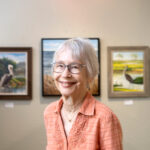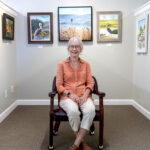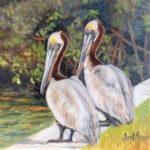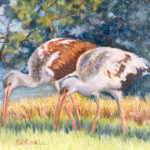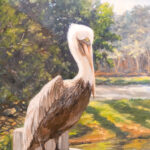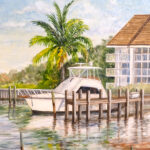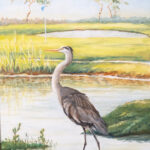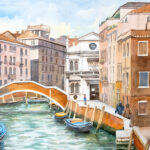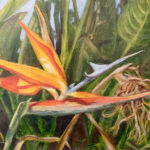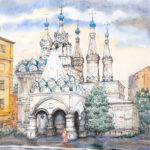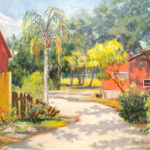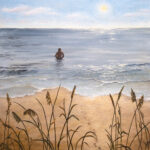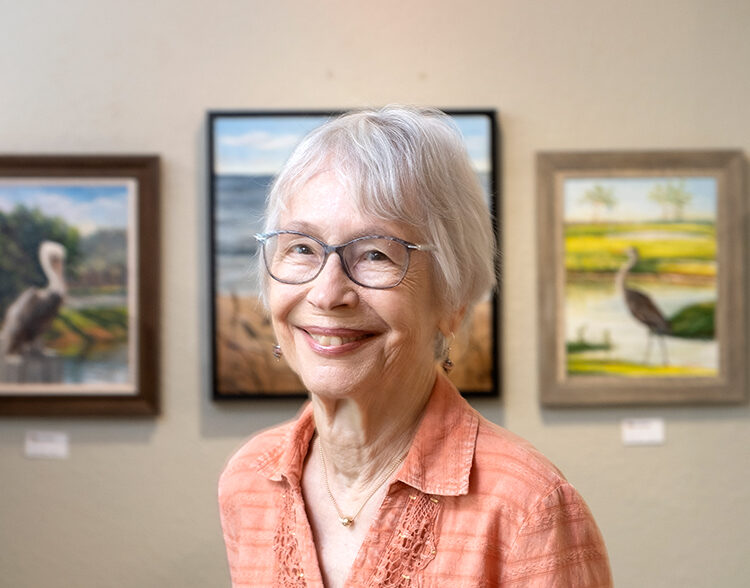
“To paint is to feel joy. The subject can be almost anything, from people to landscape to a piece of fruit,” says artist Fran San Miguel, who describes her work as both a hobby and a profession.
“The process of deciding what to paint, the challenge of looking at a chaotic world and pulling out small bits of it in order to explore its beauty, to find its spirit, then to transfer all of this to a canvas with paint, this is what makes painting irresistible to me.”
And San Miguel has a unique perspective on this world. Her childhood and later her adulthood were spent living in a dizzying array of countries around the world. It was almost inevitable that her favored artistic medium is oil painting, with watercolor a close second, as her family was literally in the oil business.
Although her parents were from Illinois, her father worked for a subsidiary of Exxon, which took them to Venezuela, where San Miguel grew up. Her mother was an artist and, although San Miguel remembers that she only showed her work once, that talent rubbed off on San Miguel, whose artistic gene was evident at an early age.
Stints around the world began with her parents and continued with her husband, whose business, Oil Field Services, took them to Mexico, England and the Soviet Union.
Stateside, they lived in Louisiana for 25 years, three of which were in New Orleans, where the Cajun culture felt at times, San Miguel says, like a foreign country.
Their last stop, before moving to Vero Beach in 1999, was Azerbaijan, a transcontinental country located between Eastern Europe and Western Asia, with the Caspian Sea to the east, Russia to the north, and Iran to the south.
Given this cultural wealth of experiences, San Miguel paints with a unique eye. Her artwork is quiet, peaceful and elegant, uncomplicated, yet deep. Her rich use of paint carves out the familiar in ways that invite the viewer to contemplate, to see more than meets the eye.
San Miguel’s husband, a native of Cuba, fled that country with his family to Miami, which gave them a Florida connection. They chose what was then a very rural Vero Beach, still largely undeveloped and undiscovered, by today’s standards. And, having both grown up in flat, hot countries, the Florida climate felt like home.
Driving off the A1A onto the mainland, she recalls, “You were hit with the fragrance of orange blossoms. All the land was orange groves.”
Having picked up impressions from every place she has lived, her paintings reflect those unique perspectives.
“Every art rule can be broken. Every eye sees colors differently, and every artist evolves. What you paint now isn’t something you will paint 10 years from now,” says San Miguel.
When she lived in Moscow and Louisiana, her initial focus was architecture. In Moscow, she was drawn to the elaborate church structures with their multi-domed roofs. As they lived there for a time, she found and painted quite a few. These she painted in watercolor, which are easier to transport when traveling.
A few pen and ink drawings depict old Cajun cottages that have stood for more than 150 years. They have withstood hurricanes and time due to their construction, a high, pitched ceiling for air circulation, the use of Cypress, a very hard wood that survives moisture and humidity, and with rain barrels to collect water.
Once in Florida, San Miguel found that while the state’s architecture didn’t speak to her artistically, she was drawn to the wildlife, particularly the various colorful birds, and the natural beauty of the Florida landscape.
Her palette is fairly classic and, although she seldom uses black, many of her paintings are a study in shadows.
“I like to show the effects of the sun, which are any color but black,” says San Miguel, who prefers primary and secondary colors.
A painting of hers that shows the sun on the water is quite striking, and others nudge a folk-art style, which she calls “static,” but to my eye were compelling.
San Miguel says her subject matter comes directly from what she sees, although she likes to add her own twist, “something with a little character.”
She likes to work in plein air groups, and also works from photos she has taken; sometimes going out specifically to take a particular shot, and other times as something presents itself.
San Miguel has found that working in oils best suits the Florida climate. She still paints in watercolor from time to time, but explains, “watercolor is unforgiving, hard to correct if needed, while oil is more forgiving.”
San Miguel attended the New Orleans Academy of Fine Arts, and for 11 years taught art at the E.D. White Catholic High School in Thibodaux, Louisiana. She has studied with such artists as Judi Betts, Tom Jones, James Kerr and Kathy Gergo.
She says she and her husband are currently “living in exile.” The roof of their condo in the Moorings caught on fire when it was struck by lightning and, despite not living on the top floor, the water from fire hoses caused extensive damage. She is looking forward to again having a studio in the guest room and plans to set it up differently this time to make better use of the space.
San Miguel’s work can be viewed at the Artists Guild Gallery, which she joined in 2004, when it was still on the barrier island in the Portales de Vero building and has continued at the gallery in its current location on 14th Avenue, in the heart of the Downtown Arts District.
Photos by Joshua Kodis

